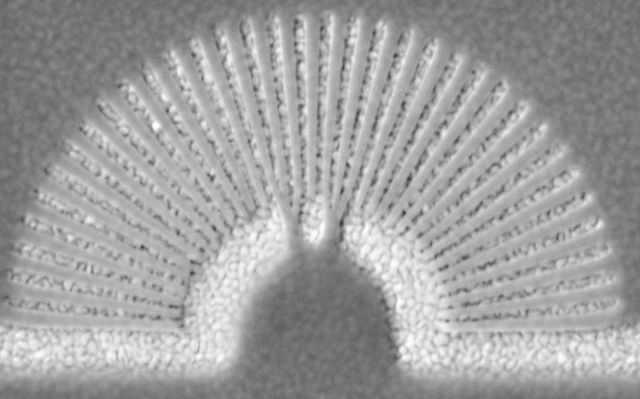Hyperlens may help image objects that were once only observed through electron microscopes.
The image shows a metamaterial hyperlens. Light passes through the hyperlens improving the resolution of very small objects. Credit University of Buffalo
Scientists at the University of Buffalo have created a prototype visible light, that improves our ability to see tiny objects.
The hyperlens may someday help detect some of the most lethal forms of cancer.
It could also lead to advancements in nanoelectronic manufacturing and to examine single molecules, with implications in biology, physics, chemistry.
Natalia Litchinitser, PhD, professor of electrical engineering at the University at Buffalo and the paper’s lead author, said:
“There is a great need in healthcare, nanotechnology and other areas to improve our ability to see tiny objects that elude even the most powerful optical systems. The hyperlens we are developing is, potentially, a giant step toward solving this problem.”
Conventional optical systems, such as microscopes and cameras, are limited by diffraction, a phenomena in which light bends as it passes around an edge or through a slit. An example of this are the closely spaced tracks of a DVD, which form a rainbow pattern when looking at the disk.
Diffraction sets a fundamental limit to the resolution of optical systems.
Scientists are working to solve diffraction with metamaterials, which are materials engineered to have properties not yet discovered in nature. Typically, the materials are arranged in repetitive patterns, often smaller in scale than the wavelengths of the phenomena they influence.
Co-authors are Jingbo Sun, PhD, assistant research professor of electrical engineering at UB, and Mikhail I. Shalaev, a PhD candidate in Litchintser’s lab.
source University of Buffalo






Leave A Comment